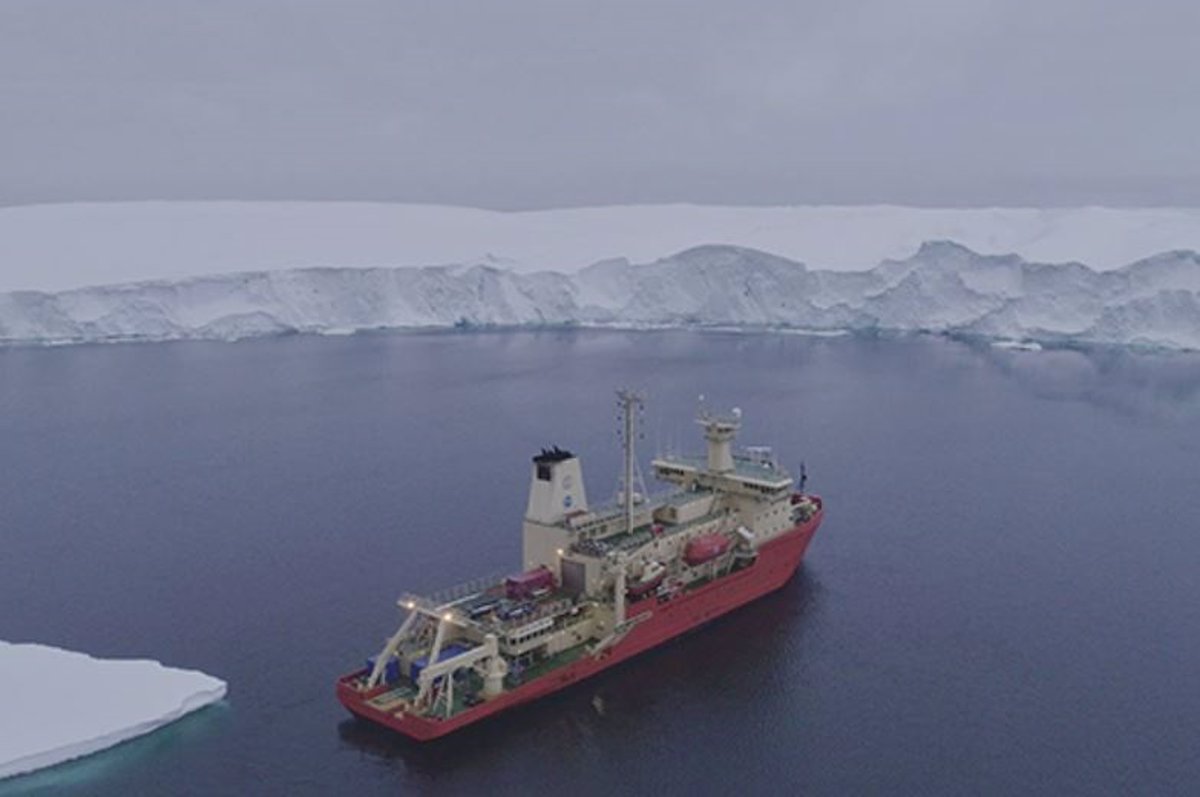MADRID, December 22 (EUROPA PRESS) –
Researchers have discovered processes that could contribute to the melting of the Antarctic ice sheet: Adjacent platforms help destabilize other platforms that are on a lower level.
The study, led by the University of East Anglia (UK), also found a small oceanic gyre -ocean circulation system- close to the Thwaites Ice Shelf can affect the amount of glacial meltwater flowing underneath. When the gyre is weaker, more warm water can access the area under the ice shelf, causing it to melt.
The Thwaites Ice Shelf is one of the largest in West Antarctica and reinforces the eastern flank of the Thwaites Glacier, which has been shrinking rapidly over the last 20 years and Antarctic glaciers are the most contributing to sea level rise.
Using a unique data set collected by sensors installed beneath the Thwaites Ice Shelf – which has also thinned and weakened significantly in recent decades – the researchers observed that the shallow ocean layer beneath warmed significantly over the period between January 2020 and March 2021. . . .
Much of this warming is being driven by high volumes of glacial meltwater from the Pine Island Ice Shelf farther east, flowing into the area beneath the Thwaites Ice Shelf.
Glacier meltwater mixes with saltwater as the ocean thaws the bottom of the ice shelves and can form a layer of floating water that is warmer than the surrounding waters.
the surrounding waters. This lighter, relatively cooler, and warmer water contributes heat that melts the bottom of the Thwaites Ice Shelf.
Lead author Dr Tiago Dotto of the UEA Center for Oceanic and Atmospheric Sciences stated that’s a statement: “We have identified other processes that can affect the stability of the ice shelf, reveal the importance of local ocean circulation and sea ice”.
“The circumpolar deep waters, a variety of warm Antarctic waters, are a key factor in melting the bottom of the ice shelves. In this study, however, we show that large amounts of heat in the shallow layers beneath the ice shelves This can be contributed by water from other nearby ice shelves in the process of melting.”
“So what happens to one ice sheet can impact adjacent ice sheets, and so on. This process is important for regions of high melting ice sheets, such as the Amundsen Sea, because one ice sheet sits next to another, and heats the exports from one ice shelves can reach the next via ocean circulation.”
Dotto added: “These atmosphere-sea-ice-ocean interactions are important because they can extend warm periods under the ice shelves by allowing warm, enriched waters to thaw. enter the adjacent cavity of the ice shelf.”
“Potentially existing Gyles in other areas around Antarctica could also lead to increased amounts of ice sheets that are susceptible to intense basal melting associated with prolonged warm conditions and, consequently, further contribute to global sea level rise.”

“Entrepreneur. Internet fanatic. Certified zombie scholar. Friendly troublemaker. Bacon expert.”


:quality(70)/cloudfront-us-east-1.images.arcpublishing.com/elfinanciero/ZTJV57HVVJGODLL3YBCDPNWTAQ.jpg)




